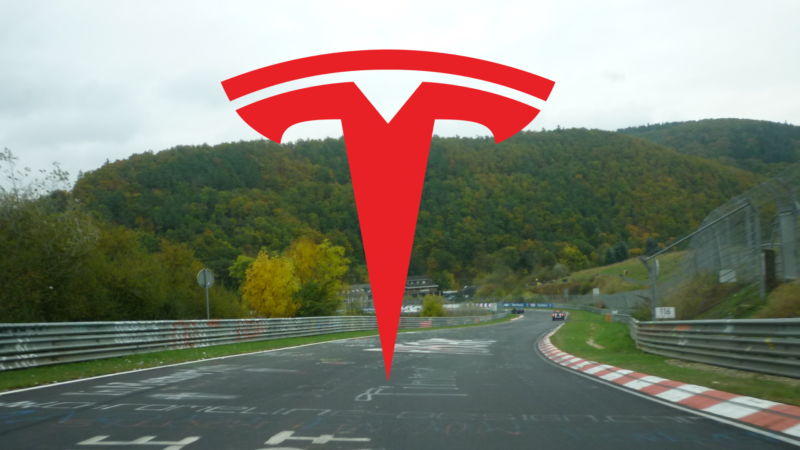https://arstechnica.com/?p=1642763

Last summer, a whole lot more people learned about the world’s gnarliest race track when Tesla announced that it was sending a Model S sedan to the Nürburgring Nordschleife. The 12.9-mile (20.8km) track was built as a make-work project during the Great Depression, and people still race there today, although it’s also widely used by car companies to develop their cars—or ruin them, if you believe that one episode of Top Gear. Tesla has been rather coy about the whole thing and hasn’t really elaborated on the full raft of modifications it made to the Model S that set an unofficial time of 7 minutes and 23 seconds. But that hasn’t stopped our friends at CXC Simulations from having a go at reverse-engineering things in silico.
I spoke to CXC’s boss, Chris Considine, and professional racer (and the only American driver to have won pole position at the Nordschleife) Jeff Westphal to find out the answers to important questions like how, and why, and was it fun?
“I saw the story about Tesla running at the Nürburgring, and then we saw the video of them running it at Laguna Seca as well and we thought ‘what if we tried to simulate this backwards, right?’ Instead of having all the data, and then creating a simulation based on that, what if we just take the lap time and all the information that we know and try and reverse engineer, essentially,” Considine told me.
CXC already had laser-scanned versions of the Nürburgring and Laguna Seca available, but it still needed a (digital) Tesla Model S to drive. “We looked at what we could see from the photos and what we can tell from the video of when they ran it at Laguna Seca. We can build a baseline Tesla from what we know, and then we have some race engineers that we work with here to build that data, and then we can then look at the apex speeds and the entry speed on the video and reverse engineer from there,” Considine explained.
If that sounds like a fair amount of work, it was—about 30 hours to build the 3D model of the car, and another 30 hours on the research and engineering side, according to Considine. He also had a good breakdown of the difference between this kind of sim and the even more expensive sims like the one I tried a couple of years ago at Multimatic in Canada. “We’ve worked with all the way up to Formula One, and the difference is, once you get up to that level with manufacturer involvement, the simulators are no longer drivers sims, they’re engineering sims. They are not meant for the drivers, but it’s a driver in the loop, because they’re the variable for the engineers to work with,” he told me.
Racing driver Jeff Westphal talks us around his lap of the Nürburgring Nordschleife.
Even in the sim, driving an electric vehicle like the Model S was quite different to the race cars inside which Jeff Westphal can more usually be found. “I found the difference very eye-opening. My entire driving career, I’m used to a little bit of engine braking, and used to having gears and using them as an advantage depending on the sequence of the corners that’s coming up. And in this case, you know, you have a different throttle linearity, you have no gears to worry about. You have potentially a lot of wheel spin at low speed, and the car was quite heavy. It’s definitely managing the rolling speed or the inertia, which is a fair bit different than a normal car,” Westphal told me.
In fact, Westphal was in the running to drive the actual Model S in Germany. “It was a funny story; I actually signed an NDA, and I was going to be the driver that did that ‘Ring lap. Somewhere along the way they decided to get someone in Europe to do it, to keep travel costs down. The ironic thing was that they hired one of my teammates that I race with in the Glickenhaus program to do it. So I didn’t get to do it, but someone I know very well did,” he told me.
The sim lap was all CXC’s doing, with no involvement or input from Tesla. But the two companies aren’t exactly strangers. For one thing, Tesla’s design studio is about a 10 minute walk from CXC in Hawthorne, California, as is Base51, a local sim racing center that uses CXC’s rigs. “They do company events [at Base51] all the time, and I think we’ll probably get a lot of requests for them to use those simulators now with that model over at Base 51, because their employees are there quite frequently.”
via Ars Technica https://arstechnica.com
January 13, 2020 at 06:55AM

